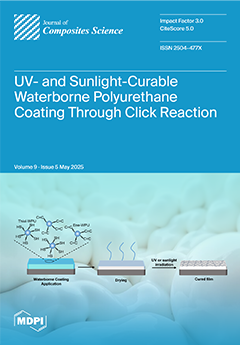An electrochemically active and promising binary composite that is made up of titanium-based MXene (Ti
3C
2T
x) and rGO is developed to simultaneously detect the Cd
2+ and Cu
2+, in water. XRD, FTIR, Raman, XPS, FESEM, elemental
[...] Read more.
An electrochemically active and promising binary composite that is made up of titanium-based MXene (Ti
3C
2T
x) and rGO is developed to simultaneously detect the Cd
2+ and Cu
2+, in water. XRD, FTIR, Raman, XPS, FESEM, elemental mapping, and EDX analysis affirmed the successful formation of the Ti
3C
2T
x-rGO composite. The produced Ti
3C
2T
x-rGO electrode exhibited a homogeneous rGO sheet covering the Ti
3C
2T
x MXene plates with all the detailed Ti2p, C1s, and O1s XPS peaks. The high-performance Ti
3C
2T
x-rGO composite was successfully tested for the Cd
2+ and Cu
2+ ions via differential pulse voltammetry (DPV), altering the pH, concentration, and the real water sample’s quality. The electrochemical performances revealed that the proposed Ti
3C
2T
x-rGO composite depicted excellent detection and quantification limits (LOD and LOQ) for both Cd
2+ (LOD = 0.31 nM, LOQ = 1.02 nM) and Cu
2+ (LOD = 0.18 nM, LOQ = 0.62 nM) ions, where the result is highly comparable with the reported literature. The Ti
3C
2T
x-rGO was proven highly sensitive towards Cd
2+ (0.345 μMμA
−1) and Cu
2+ (0.575 μMμA
−1) with great repeatability and reproducibility properties. The Ti
3C
2T
x-rGO electrode also exhibited excellent stability over four weeks with a retention of 97.86% and 98.01% for Cd
2+ and Cu
2+, respectively. This simple modification of Ti
3C
2T
x with rGO can potentially be advantageous in the development of highly sensitive electrochemical sensors for the simultaneous detection of heavy metal ions.
Full article





